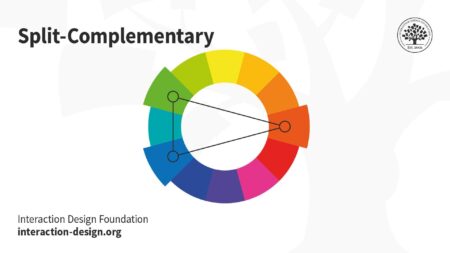EthiopiaŌĆÖs Unprecedented Tree Planting Drive: A Global Beacon for Environmental Stewardship
Transforming Landscapes: EthiopiaŌĆÖs Ambitious Reforestation Campaign
In a remarkable environmental achievement, Ethiopia successfully planted over 700 million trees within a single day, shattering previous global records. This extraordinary effort forms a critical part of the nationŌĆÖs broader strategy to combat deforestation and address climate change challenges. Beyond restoring its own natural habitats, EthiopiaŌĆÖs initiative serves as an inspiring blueprint for countries worldwide aiming to implement sustainable ecological restoration.
The government has set an ambitious target to plant more than four billion trees throughout the year, underscoring its dedication to rehabilitating degraded lands while actively involving communities at every level. Led by Prime Minister Abiy Ahmed, this movement galvanized millionsŌĆöfrom grassroots volunteers and educational institutions to non-governmental organizationsŌĆöhighlighting how unified community engagement can drive impactful environmental transformation.
Community Engagement: The Driving Force Behind Ethiopia’s Green Revolution
The triumph of this large-scale tree planting event was largely due to widespread participation from diverse ethnic groups and regions across the country. Special attention was given to planting native tree species carefully chosen for their ability to enhance biodiversity and fortify ecosystem stability. Key elements that contributed include:
- Empowering Local Communities: Direct involvement fosters stewardship and ensures ongoing care for reforested areas.
- Prioritizing Indigenous Trees: Utilizing endemic flora supports balanced ecosystems that sustain native wildlife populations effectively.
- Environmental Education Initiatives: Awareness campaigns emphasize forestsŌĆÖ vital role in regulating climate patterns, encouraging eco-friendly habits beyond planting days.
This endeavor also benefited from international collaborations offering technical expertise, financial support, and knowledge sharingŌĆödemonstrating that addressing climate change demands coordinated global efforts.
The Multifaceted Environmental Impact of Mass Tree Planting
EthiopiaŌĆÖs reforestation project delivers extensive ecological benefits far beyond carbon sequestration alone. Notable positive outcomes include:
- Mitigating Carbon Emissions: Mature forests serve as crucial carbon sinks by absorbing significant amounts of greenhouse gases annually, helping curb global warming trends.
- Sustaining Soil Integrity & Combating Erosion: Dense root systems anchor soil against erosion caused by wind or water runoffŌĆöpreserving fertile land essential for agricultural productivity.
- Cultivating Wildlife Habitats: Newly established forest zones provide shelter and nourishment vital for diverse animal speciesŌĆöincluding endangered endemic fauna unique to Ethiopia’s ecosystems.
- Enhancing Water Cycles: Forests regulate hydrological processes through transpiration which influences rainfall distribution while replenishing groundwater reserves critical during drought periods.
The success hinges on meticulous planning such as selecting appropriate species combinations tailored specifically for different ecological zones alongside continuous maintenance ensuring high survival rates among young trees. Sustainable management practices remain indispensable, integrating advanced technologies like satellite monitoring coupled with community-led stewardship programs fostering local accountability.
| Pillars of Success | Description & Significance |
|---|---|
| Diverse Species Integration | Cultivates resilience against pests/diseases; supports varied wildlife habitats; |
| Active Community Involvement < td >Builds social responsibility ensuring protection from illegal logging or neglect; | |
| Continuous Monitoring & Maintenance < td >Enables early detection of threats (drought/pests) allowing timely interventions; |
Sustaining Progress: Insights from Ethiopia’s Green Milestone & Its Global Implications
EthiopiaŌĆÖs landmark achievement offers valuable lessons on executing large-scale reforestation projects effectivelyŌĆöand sustaining their long-term impactŌĆöin developing nations facing similar environmental challenges. To ensure enduring benefits beyond initial planting phases, several strategies are essential:
- Civic Engagement Programs : Ongoing education initiatives embed conservation ethics within communities securing lasting commitment.
- Incentive Structures : Offering financial rewards or resources motivates locals who actively nurture planted areas contributing directly towards economic empowerment.
- Advanced Monitoring Technologies : Employing drones, mobile applications alongside traditional field inspections enables precise tracking of tree health facilitating adaptive management.
The Ethiopian experience further underscores the necessity of strong governmental leadership combined with partnerships involving NGOs, private sector collaborators,&amp;amp;amp;amp;amp;& international stakeholders. These alliances amplify resource mobilization capacity while promoting knowledge exchange crucial for scaling restoration efforts globally.
- < b >Global Collaboration : Cross-border expertise sharing accelerates innovation in restoration methodologies benefiting all parties involved.& nbsp ;& nbsp ;& nbsp ;
& nb sp;& nb sp;& nb sp;& nb sp;
&nb sp;
- < b >Flexible Project Management :< / b >&n bsp;Adaptability allows modifications based on real-time data enhancing overall project success over time.< / li >
- &n bsp;< b >Harnessing Technology :< / b >&n bsp;Utilizing satellite imagery integrated with AI analytics provides comprehensive oversight improving decision-making precision.< / li >
A Path Ahead: Fostering Resilient Ecosystems Through Unified Efforts
Ethiopia’s historic accomplishment not only represents a transformative national milestone but also resonates globally amid escalating concerns about accelerating deforestation fueling climate emergencies worldwide. This breakthrough exemplifies how synchronized mass participation paired with visionary policies can generate substantial environmental gains at scale.
As countries grapple with intensifying ecological pressures driven by population growth and industrialization, sustainable forest regeneration emerges as an essential approach toward meeting net-zero emission targets outlined under international accords such as the Paris Agreement (aimed at limiting temperature rise below 1.5┬░C).Sustained success depends on continued collaboration between governments, local communities,&amp;amp;a mp;sustainability advocates supported through innovative financing mechanisms designed specifically around green infrastructure investments.
Ethiopia sets a compelling precedent proving that ambitious goals once considered unattainable become feasible when pursued collectivelyŌĆöa lesson echoing far beyond its borders instilling renewed optimism amidst daunting planetary crises.
Ultimately,&amp;amp;a mp;safeguarding our environment requires steadfast commitment grounded in science-based policies tightly woven together with inclusive societal participationŌĆöthe very spirit embodied within Ethiopia’s monumental tree planting victory today.rn
- < b >Global Collaboration : Cross-border expertise sharing accelerates innovation in restoration methodologies benefiting all parties involved.& nbsp ;& nbsp ;& nbsp ;







